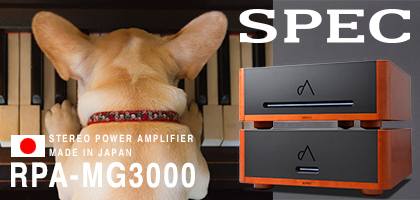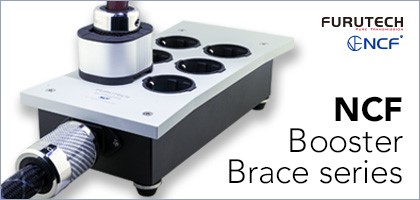No. 257 October 2025
- COVER REVIEW: ANCIENT AUDIO Silver Grand Mono Mk II ⸜ power amplifier • monoblocks » POLAND • Kraków
- KRAKOW SONIC SOCIETY № 153: 30 years of ANCIENT AUDIO » POLAND • Kraków
- FEATURE ⸜ music & technology: HISAO NATSUME presents - In search for the lost great pianism Chopin tradition » part 2 (France) » JAPAN • Tokyo
- REVIEW: AUDIOPHONIQUE Classic AP 300D ⸜ power amplifier » POLAND • Pruszków
- REVIEW: AVATAR AUDIO Holophony No. 1 ⸜ loudspeakers • floor-standing » POLAND • Osowicze
- REVIEW: DIVALDI Gold PA One ⸜ integrated amplifier » POLAND • Kraków
- REVIEW: J.SIKORA Aspire ⸜ turntable (deck + tonearm) » POLAND • Lublin
- REVIEW: MB AUDIO CABLE Silver ⸜ analog interconnect ⸜ RCA » POLAND • Turza Śląska
- REVIEW: XACT N1 ⸜ LAN switch » POLAND • Wrocław
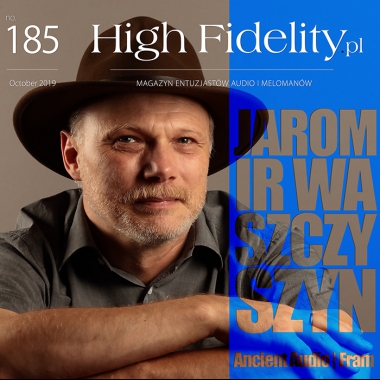

|

|

I thought: Ancient Audio is a classic company that uses classic solutions, refining them, grinding, polishing. In its center we find technologies from a hundred years ago. In turn, Fram is, in fact, a technology company based on modern solutions, both in terms of their core, i.e. the signal processor, and appearance. During the conversation, I will quickly realize my mistake and learn that everything that is related to the sound processor is just a branch of the Ancient Audio - the processor is still the Ancient Audio project, and in turn Ancient Audio uses the ideas developed in Fram. So we have Ancient Audio Classic and Ancient Audio New Technologies - and within the latter there is the Fram brand. Until now they made active speakers, but in the near future an amplifier will be added to the lineup. 
|1| The emotional side, or ANCIENT AUDIO The situation that I find there is sort of mixture of a workshop and a listening room. On the table flanked on two sides by powerful, prototype loudspeakers almost two meters high and smaller, the active model MAXI 150, stands the Air V-Edition CD player and the the A-3 amplifier, while in the back on a table there are new Ancient Audio amplifiers being assembled - something Jarek has been working on for several years. There are many cable everywhere, and the back wall is lined with boxes of books and clothes. There are also some clothes in additional jute bags thrown next to the wall. Jaromir Waszczyszyn: Where did such idea come from? The Silver Grand Mono is an amplifier that, I think, is as good as it can be. It was created in 2005 and by way of changes in elements selection, minor corrections in terms of the scheme it was possible to make a really great amplifier. The question was obvious - what could be done better. In the Silver Grand Mono, what I could do better I already did and I did not know what could be done differently. 
The amplifying section is a classic design, it is a 300B tube without any feedback - whether global or local - driven by a simple stage based on triodes. However, much remains to be done in the power supply. Because all of our power cables trials show how critical power supply is for the sound quality. In the case of tube amplifiers, it is said that the amplifier itself is a piece of cake, the problem is in its power supply. In other words – all you have to do is to send a man to the Moon and bring him back, and all the rest is easy ... The idea that I've been developing for the new amplifier, which will be called Silver Single Mono, is how to power a 300B tube. As we know there is a problem with it - it is a direct heated tube. So the filament is also a part of the audio circuit. If we look at the Silver Grand Mono, we can see that the pieces of wires that supply the heating circuit run to the power supply, then through the power transformer, which through a fairly large capacity collects various "trash". So what I wanted to achieve was to find a way to make it so that the circuit was as compact as possible and that these capacities were as small as possible. The idea is that the 240 VAC current is first converted into direct current in the power supply. So we get galvanic separation through a pulse transformer, which is very small and therefore has a very small capacity. At its output we get 24 VDC, with which we enter the appropriate power supply. There are two pulse transformers in it. The larger one is a converter and converts low voltage into high voltage to power the tube. The second transformer, the small one, prepares the filament voltage for the tubes. Therefore, we have a double galvanic separation by very small capacities. 
The length of the wire from the transformer to the tubes is twenty centimeters max, which is not comparable with what I used in the Silver Grand Mono. These are, in fact, two transformers with initial voltage stabilization, but the main stabilization is still based on linear stabilizers - there are very fast high voltage capacitors, with a combined capacity of 2200μF, so for an amplifier with 300B tubes that's a lot. It is important that, compared to traditional capacitors, those used by me are several dozen times faster, and therefore such a power supply works much better for audio signals. My interlocutor (hardly) lifts up the amplifier to show it to me from below - on the recording I can clearly hear a few short puffs and one moan: From the bottom there is not much to look at, it's a simple layout. The main part of the amplifier is simply power supply. This is the hardest thing to do. All elements, i.e. transformers, are non-typical. I managed to make contact with the best designer of such transformers in Poland, from Feryster, Mr. Roman Mandziejewicz. Telephone conversations with him were something special for me. I bothered him for three months before he made these for me. Jarek points out a huge transformer behind the tube: In turn, it is a "double C" type output transformer, insulated with Teflon, with silver wire. That's how transformers are made in Kondo OnGaku and I don't know a better solution. Here, the technology compared to the Silver Grand Mono, maybe apart from a special Teflon in the new design, has not changed much. All the fun with such a transformer begins with the bare silver wire, which is made in a laboratory in Silesia, where silver is also prepared for medical industry. However, such wire must be insulated. Because it is a very soft wire, you have to do it by hand - I just varnish it. And this takes time, lots and lots of time. 
I am very curious about how this amplifier will sound. The target loudspeakers it was designed for are high sensitivity ones, with a large woofer and a ribbons for the midrange and treble. And a new source? - With sources it goes like this - I have a new player ready, all in aluminum. Enclosures are milled from one element. Perhaps I will return to the two-box formula - one for transport, and the other for the converter. And this is because if the converter is divided into two pieces, it sounds great, but it is not very functional - such a converter cannot be used separately, with other signal sources. At the end I say that I was almost sure that Ancient Audio is history and now only Fram matters. Jarek and the rogue (yes, there is such a word :) smile says that - as you can see - "it gets done" and that rumors of AA's death were premature. It seems that now Ancient Audio is getting a new life and new devices are the result of the application of new techniques, which Jarek once could not understand. |2| Rational side, i.e. FRAM We are sitting on the sofa in front of the system and new Fram speakers. Jarek begins his story from the company's history, but quickly gets into the technical details related to the signal processor, which is the basis of all products of this brand, as well as the cabinets that distinguish it from all other Polish audio companies. Loudspeaker processor | I think that my most interesting product developed in recent years is the digital speaker processor. There are people who do not like it very much, but there are also those who think that it is cool and there is potential in it. First, however, a bit of a history. |

We started with small speakers - it was something completely different than working at AA. It was a completely new experience for me because I had to go from individual work to teamwork. The company that produces the speakers under the name Fram is Digital Speaker Manufacture. I still have a tendency to work independently, but here I have to watch myself. We started with presenting this solution to one of the TV sets manufacturers. We are talking about 3,000,000 units a year. The effect was nice, because the intelligibility of the sound from these tiny speakers that are installed in them has improved significantly. Ultimately, the company was not interested in it, but the people who worked in it saw the potential and we met in a place where one such story had already begun one time, under the slogan: "I have nothing, you have nothing, he has nothing, let's set up a factory." There was once the world's largest linen spinning mill in this city. The first step was cooperation with Tonsil - the amplifier you can see was prepared for their Altus speakers. The idea was for a traditional company to get a kick from us in the form of technology. However, nothing came of the cooperation. We based our activity on the fact that we had a factory that could produce any quantity of electronic elements. And, as I say, it was a transition from author's work to teamwork with a team of designers, a team decision making, as there were three company owners. We are adjusting, and the problems were, as usual, with communication. The most important thing was that we were expanding as a company. An experienced electronic engineer joined our team, a great software programmer and aviation constructor who designs aircraft fuel systems. When he looked at our prototypes with wooden and aluminum housings, he said that we would do it ourselves entirely of aluminum - so the Fram was born. 
The first loudspeakers made of aluminum were horrible - everything rang, did not want to play, unacceptable. However, I joined the design process as a man who had already done something in my life and together we came to loudspeakers that sound very good and look great. After the success of the first speakers, our appetite began to grow, so we decided to prepare speakers that have a more classic layout, i.e. with a tweeter. We still stick to the concept of small and medium size active loudspeakers because it is extremely convenient for the user. Especially since the new speakers feature digital inputs - optical and electrical - as a result of which we actually could offer serious speakers. As usual, the question arose - what's next? So we developed a concept of very large speakers, which will be called Line - what you can see here is their prototype. Line | I wanted to use my best experience when it comes to audio, i.e. the concept of Wing speakers, which we made for John Tu, to the USA. Since the Line came out very neatly, we didn't want to put all the electronics inside them. So we departed from the concept of an active speaker, although it will still be a complete set. 
Such a set will consist of three elements: two speakers and an amplifier. The amplifier will offer analog and digital inputs, remote control, and above all a signal processor. The first element is the A-3 solid-state amplifier. All comments that you offered during its test, such as its limited functionality, were taken into consideration by us. It will be a small amplifier in class A, in single-ended mode, with an output of 2 x 40 W. In class A, the SE delivers the first few watts, then switches to AB class. The speakers have great potential. We would like to offer them to clients who have large apartments that need to be filled with sound. 
We are still in the development phase of the sales model, because direct sales didn't work. So we returned to the classic model - in Poland the Fram loudspeakers are distributed by 4HiFi. Distribution outside Poland is also slowly starting to spread in other channels than classic audio. This is supposed to be a nicely playing lifestyle product. That is why we prepare presentations for people dealing with interior architecture. Here came a brief conversation about the pros and cons of each type of distribution, about how the lifestyle market differs from classic audio one. But my main question is why there are so few innovative companies in Poland, especially in audio. We make great loudspeakers, amplifiers, sources, cables, racks - but these are all things invented and developed decades earlier, usually by others, there is nothing really revealing about them. Innovation | Do you see many other innovative companies in Poland (and I'm not just talking about audio)? Well, no. Generally, most are companies that revolve in their own "sauce". The software companies, they only deal with software, the high tech companies, they do not move beyond this segment. What is lacking is cooperation, cooperation of various fields. Those who have succeeded are simply the best. In Poland we have, for example, a company that produces the world's best black boxes for air crafts, based on semiconductor memory. However, this is an exception. An important reason is that we have complexes. We are also uninformed. Most important, however, is what we talked about - we have no experience in cooperation. Teamwork is our problem, i.e. it needs to be shared sensibly and responsibility. Innovation is the interaction of many different elements. I will give you an example with these speakers. They sound fun and look cool. To make it happen we had to combine several elements. We needed a man who specializes in acoustics. We needed a company that would make all the elements out of metal exactly as we needed them to be made. An electronics engineer was needed. And a few other people. I, as Ancient Audio, would never have prepared such loudspeaker. To be honest - it would be hard for me to share the "author's glory" with someone who "only" designs speakers from the technological side. 
To make it look like this, we needed people with a fresh look, someone from outside, who did not have any clue about the loudspeakers, but were supported by someone who already knew them. For example, someone had to come up with an idea to indicate the volume level with a single, multicolored LED - this required our software programmer. We were all wondering how to do it, and he took a look and found a solution. Let me repeat - that the reason innovation in Poland is at such a low level is primarily the result of a lack of cooperation between specialists from various fields. In their narrow specialties they are excellent, but they cannot find a common platform. Money is of course important, it's probably clear. Innovations require investment, but this is not the only or even the main problem. Look how much money is accumulated in Japan. A state-of-the-art technology center was built there on the artificial island, which was to supply hi-tech technologies to the whole world. And what? - And nothing, not a single Nobel Prize came out. Because something is missing, there is no openness to "impossible worlds.", no thinking outside the box This is also the case with us, where the children starting from kinder garden are told how to act, to follow what's on the picture and never do something that isn't;t there. In Japan, there is the problem of a hierarchy that suppresses everything on top of that. Japanese aphorism says that "a protruding nail must be hammered down." It is even worse in Poland because it has neither money nor experience in cooperation. Polish students and scientists traveling to the West say that the first objections towards them are related to teamwork. Individualism is valued as a creative force, but there is also a huge emphasis on teamwork, because it allows people to implement these ideas. |3| FORWARD! Jarek stands up and moves the light so that I can read the writing on the back of the speaker. On each Fram speaker you will find the inscription "Powered by Ancient Audio". Everything is intertwined for us. Initially, we thought that we would do a lot and cheaply, and we ended up doing more expensive things in smaller quantities - but we had to get there by trial and error. The roots of our activities are classic, but everything that grows from them must be modern. Otherwise there will be no progress, only "phantom movements". After all, "Fram" in Norwegian means "forward"! ■ |
About Us |
We cooperate |
Patrons |
|
Our reviewers regularly contribute to “Enjoy the Music.com”, “Positive-Feedback.com”, “HiFiStatement.net” and “Hi-Fi Choice & Home Cinema. Edycja Polska” . "High Fidelity" is a monthly magazine dedicated to high quality sound. It has been published since May 1st, 2004. Up until October 2008, the magazine was called "High Fidelity OnLine", but since November 2008 it has been registered under the new title. "High Fidelity" is an online magazine, i.e. it is only published on the web. For the last few years it has been published both in Polish and in English. Thanks to our English section, the magazine has now a worldwide reach - statistics show that we have readers from almost every country in the world. Once a year, we prepare a printed edition of one of reviews published online. This unique, limited collector's edition is given to the visitors of the Audio Show in Warsaw, Poland, held in November of each year. For years, "High Fidelity" has been cooperating with other audio magazines, including “Enjoy the Music.com” and “Positive-Feedback.com” in the U.S. and “HiFiStatement.net” in Germany. Our reviews have also been published by “6moons.com”. You can contact any of our contributors by clicking his email address on our CONTACT page. |
 



|
   |
main page | archive | contact | kts
© 2009 HighFidelity, design by PikselStudio,
projektowanie stron www: Indecity



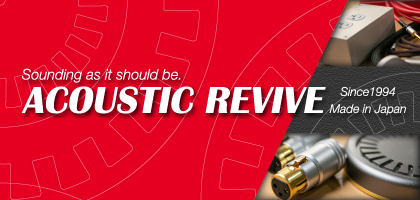

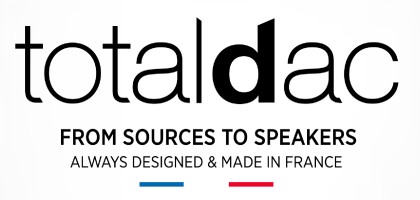

 en years is a long time and a lot has changed since then.
en years is a long time and a lot has changed since then. 